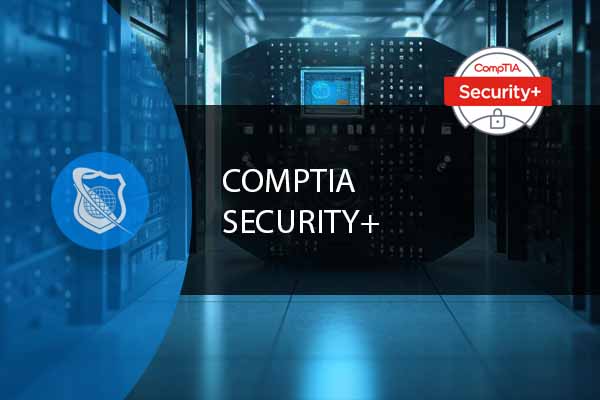Grasping the intricacies of threat actors and their motivations is crucial. This knowledge isn’t just a pillar of robust cybersecurity strategies; it’s a proactive shield against a myriad of cyber attacks. By dissecting the intentions behind these digital threats, we can better safeguard our data and digital infrastructures.
Defining Threat Actors Threat actors are not a monolith. They range from individual cybercriminals seeking financial rewards to state-sponsored agents aiming for geopolitical leverage. Understanding these categories is essential for a targeted and effective cybersecurity response. They include:
- State-Sponsored Actors: Engaging in cyber espionage and political manipulation.
- Cybercriminals: Focused on monetary gain through methods like data breaches.
- Hacktivists: Merging hacking with activism to promote political or social change.
- Insider Threats: Individuals within organizations motivated by personal gain or grievances.

Information Security Analyst Career Path
An Information Security Analyst plays a pivotal role in safeguarding an organization’s digital infrastructure and sensitive data. This job involves a blend of technical expertise, vigilance, and continuous learning to protect against ever-evolving cyber threats.
Motivations Behind Cyber Attacks The driving forces behind cyber attacks are as varied as their perpetrators. Key motivations include:
- Economic Gain: A primary driver for cybercriminals, manifesting in ransomware attacks and data theft.
- Political/Geopolitical: State-sponsored attacks often aim at espionage or influencing global politics.
- Ideological: Hacktivists use cyber attacks as a tool for advocating political beliefs or social justice issues.
- Personal: Insider threats emerge from personal motives, ranging from revenge to financial incentives.
Examples of Notable Cyber Attacks Examining past cyber attacks offers valuable insights into the tactics and motivations of threat actors. Notable incidents include:
- High-profile data breaches in major corporations, often tied to financial motives.
- State-sponsored attacks targeting critical national infrastructure, reflecting geopolitical intentions.
- Hacktivist-led disruptions of government websites, driven by political or social agendas.
Attack Vectors & Indicators
Threat Vectors
Threat vectors are the methods or pathways through which cyber attackers execute their intrusions. These paths can range from software vulnerabilities to human interactions and are key to understanding how security breaches occur.
Social Engineering
Social engineering involves manipulating individuals into divulging confidential information or performing actions that compromise security. It relies heavily on human interaction and often involves tricking people into breaking normal security procedures.
Operating System Vulnerabilities and Attacks
These refer to weaknesses within operating systems that attackers exploit. Operating system attacks can range from unauthorized access to full system control, often through exploiting unpatched vulnerabilities or system design flaws.
Application Vulnerabilities and Attacks
Application vulnerabilities are security flaws in software applications. Attackers exploit these vulnerabilities to perform unauthorized actions, such as accessing sensitive data or disrupting service. Common attack methods include SQL injection and cross-site scripting (XSS).
Web-based Vulnerabilities and Attacks
Web-based vulnerabilities are weaknesses in websites or web applications. These attacks can lead to data breaches, website defacement, or the distribution of malware. They often exploit flaws in web application logic or coding errors.
Common Malicious Activity Indicators
These indicators help identify potential malicious activities within a network or system. They include unusual system behavior, unexpected data flows, and the presence of known malware signatures.
Insider Threat Indicators
Insider threat indicators are warning signs that an individual within the organization may be compromising security. These can include unusual access patterns, unauthorized information retrieval, and discrepancies in data handling.
Social Engineering Indicators
Indicators of social engineering include unsolicited requests for sensitive information, unexpected emails or calls from unknown sources, and unusual urgency or secrecy around certain requests.
Malware Activity Indicators
These indicators suggest the presence of malware in a system. They can include system slowdowns, unexpected pop-ups, and the presence of unfamiliar files or programs.
Operating System Attack Indicators
These indicators are signs of an operating system being compromised, such as unusual system messages, unexplained configuration changes, or the disabling of security features.
Application Attack Indicators
Signs of application attacks include unexpected application behavior, frequent crashes, and unauthorized changes in application data.
Physical Attack Indicators
Physical attack indicators relate to unauthorized physical access to facilities or hardware, including tampering signs, unauthorized entry logs, or physical damage to systems.
Cryptographic Attack Indicators
These are signs that cryptographic systems are being compromised, like unexpected changes in encryption performance, unauthorized issuance of digital certificates, or decryption failures.
Password Attack Indicators
Indicators of password attacks include multiple failed login attempts, account lockouts, or unexpected password change notifications.
By understanding these vectors and their indicators, organizations can develop more robust defense mechanisms and response strategies to mitigate the risks of cyber threats.
Secure Your Networks and Prevent Password Breaches
Our robust CompTIA Sec+ course is the perfect resouce to ensure your company’s most valuable assets are safe. Up your security skills with this comprehensive course at an exceptional price.
Understanding the Mindset Grasping the mindset of threat actors is key to anticipating and mitigating future attacks. This understanding is bolstered by:
- Threat Intelligence: Collecting and analyzing data to understand and predict attack patterns.
- Security Audits and Employee Training: Essential for identifying vulnerabilities and educating staff about potential threats.
- Advanced Cybersecurity Technologies: Implementing cutting-edge tools for defense against sophisticated attacks.
Mitigation Strategies To effectively counter these threats, organizations must adopt comprehensive strategies. Essential components include:
- Proactive Security Posture: Staying ahead of threats through continuous monitoring and threat intelligence.
- Regular Security Audits: Assessing and fortifying defenses against potential vulnerabilities.
- Employee Cybersecurity Training: Equipping staff with the knowledge to recognize and prevent attacks.
- Advanced Cybersecurity Technologies: Utilizing state-of-the-art tools to protect against evolving threats.
Conclusion
Understanding threat actors and their motivations is a cornerstone of effective cybersecurity. In a world where digital threats are constantly evolving, staying informed and vigilant is our best defense. By demystifying the motives of these actors and employing robust security measures, we can significantly bolster our digital fortifications.
Freqently Asked Questions Related to Threat Actors
What Are Threat Actors in Cybersecurity?
Threat actors in cybersecurity are individuals or groups responsible for initiating cyber attacks or security breaches. They can range from lone hackers to organized criminal groups, and even state-sponsored entities. Their objectives vary widely, including financial gain, political motives, espionage, or personal vendettas.
How Do Threat Actors Differ from Each Other?
Threat actors differ based on their motives, methods, and the scale of their operations. For instance, state-sponsored actors often engage in espionage for political or military advantage, while cybercriminals are usually motivated by financial gain. Hacktivists carry out attacks for ideological reasons, and insider threats arise from disgruntled employees or individuals with access to internal systems.
What Are the Most Common Tactics Used by Threat Actors?
Common tactics include phishing attacks, where actors trick victims into revealing sensitive information; malware deployment, such as viruses or ransomware; exploiting software vulnerabilities; and conducting denial-of-service attacks. Additionally, sophisticated actors might use advanced persistent threats (APTs) to maintain long-term access to a target network.
How Can Organizations Protect Themselves from Threat Actors?
Organizations can protect themselves by implementing robust cybersecurity measures such as regular software updates, employing firewalls and antivirus programs, conducting security audits, and employee training programs to recognize potential threats. It’s also crucial to have incident response plans and to utilize threat intelligence for informed decision-making.
Can Threat Actors Be Tracked and Prosecuted?
Tracking and prosecuting threat actors can be challenging, especially when they operate across international borders or use advanced methods to conceal their identity. However, with the collaboration of law enforcement agencies, cybersecurity experts, and international cooperation, it is possible to identify, track, and sometimes prosecute these actors. Efforts include digital forensics, cyber intelligence, and legal actions under cybercrime laws.

























